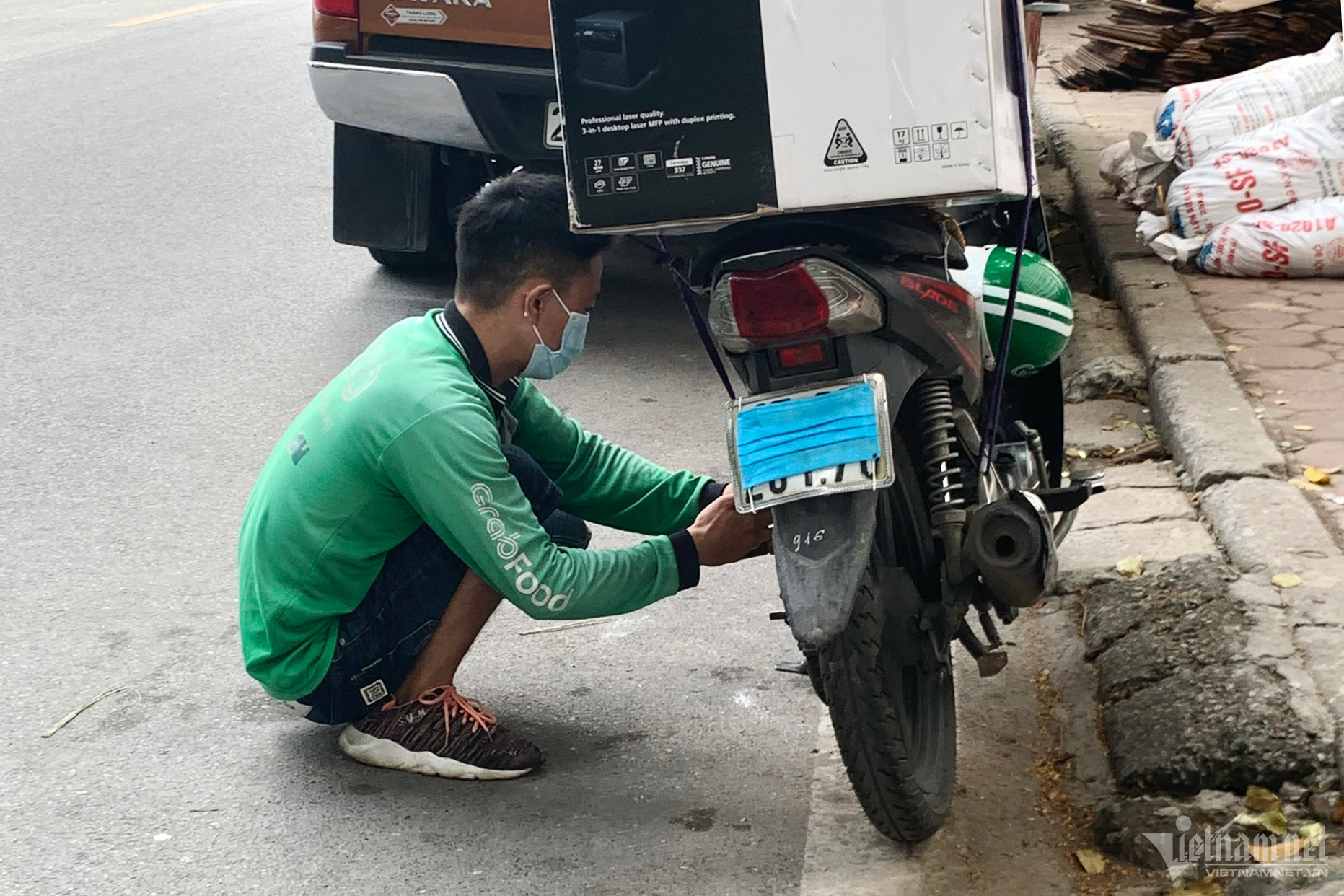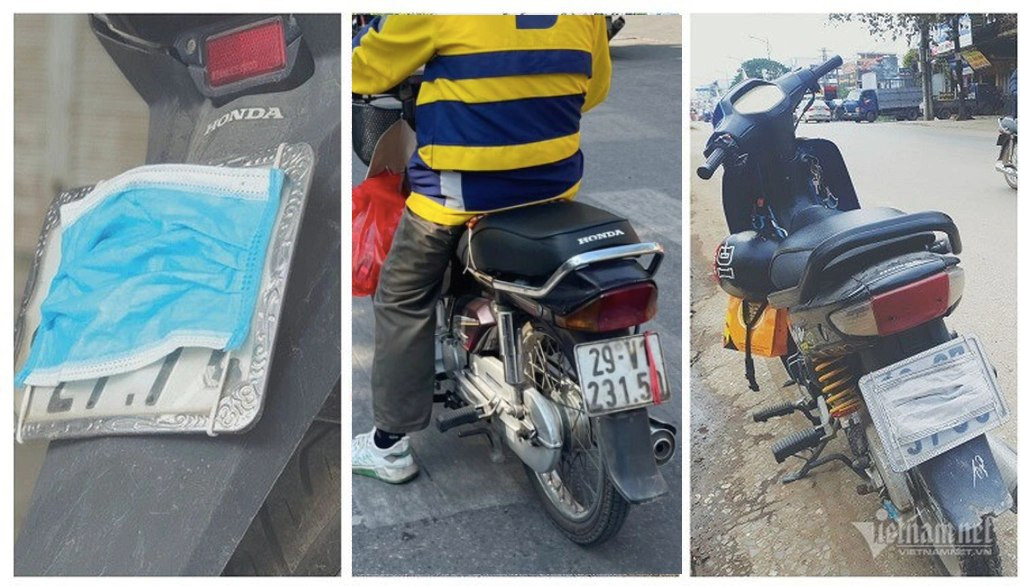Despite tougher penalties under the updated Decree 168/2024, many delivery riders and ride-hailing drivers in Vietnam continue to obscure their motorcycle license plates with items like stickers, tape - or most commonly, disposable face masks.
A known violation that many still ignore

Face masks are a common way to conceal motorcycle plates. Photo: Hoang Hiep
Since the start of 2025, the government has increased fines for concealing license plates five- to six-fold, ranging from VND 4 to 6 million (approx. USD 160–240). However, the habit persists, especially among the gig economy’s core workforce: shippers and tech-enabled motorcycle taxi drivers.
Nguyen Xuan T., a GrabBike driver in Hanoi, admitted to VietNamNet that covering license plates has become common among drivers for the past four to five years. “Taping a face mask over the plate is quick, simple, and effective,” he said.
The reasons vary, but most revolve around avoiding detection. “Sometimes I go out without a helmet, in the wrong uniform, or take passengers where I shouldn’t. If the company sees a photo of me violating regulations, my account could be suspended or even permanently blocked,” he explained.
He added, “Sometimes I just want to run a few trips while I’m out doing personal errands. As long as I cover my license plate, the company can’t trace me. I keep 100% of the fare without platform deductions.”
Masking plates to game the system

Various tricks used to hide license plates from surveillance. Photo: Hoang Hiep
For others, obscuring plates enables the use of multiple accounts, outsourcing delivery tasks, or accepting off-platform orders to boost income. Vu Anh K., a university student and part-time BeFood rider, said he shares his delivery account with friends to meet bonus thresholds.
“There are days I have classes, so my friends use my account to make deliveries with their own bikes. To avoid system flags for mismatched vehicles, we cover the plates. Some restaurants also hand out direct orders that aren’t tracked in the app,” K. told VietNamNet.
Even though most riders admit the practice is illegal, they feel enforcement is rare. “Cops only stop you for major violations like running red lights or not wearing a helmet. If you’re quick, you’ve already passed the checkpoint before they even notice the covered plate,” said Do Van P., another ride-hailing driver.
Besides face masks, some drivers use tape, correction fluid, or even deface their plates to avoid detection. Yet face masks remain the most popular method - cheap, fast, and discreet.
A minor trick with major consequences

Lawyer Duong Duc Thang, Director of Duc Tri Tin Law Firm (Hanoi Bar Association), emphasized that concealing license plates is a serious offense under Article 14, Clause 3b of Decree 168/2024. Violators face fines of VND 4–6 million and a deduction of 6 points from their driver’s license.
According to Thang, this behavior - while seemingly minor - poses major risks. It hampers law enforcement, obstructs traffic investigations, and contributes to a broader culture of legal disregard.
“Covered plates prevent authorities from tracking vehicles involved in accidents or offenses such as red-light running or illegal lane changes. Surveillance cameras might capture the vehicle but not the number plate, making it impossible to trace,” he said.
Thang also warned that masking plates undermines accountability in tech-based transport services. Shared accounts, off-platform orders, or rides by non-qualified individuals compromise service quality and passenger safety.
“This creates a dangerous precedent, especially among young people who begin to view rule-breaking as acceptable. Stronger enforcement is needed. And users must also play a role by refusing to support shady drivers,” he added.
Hoang Hiep